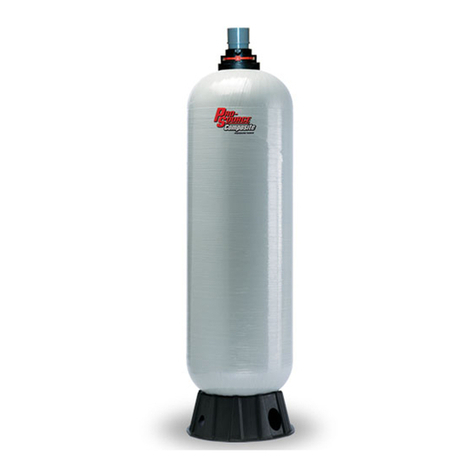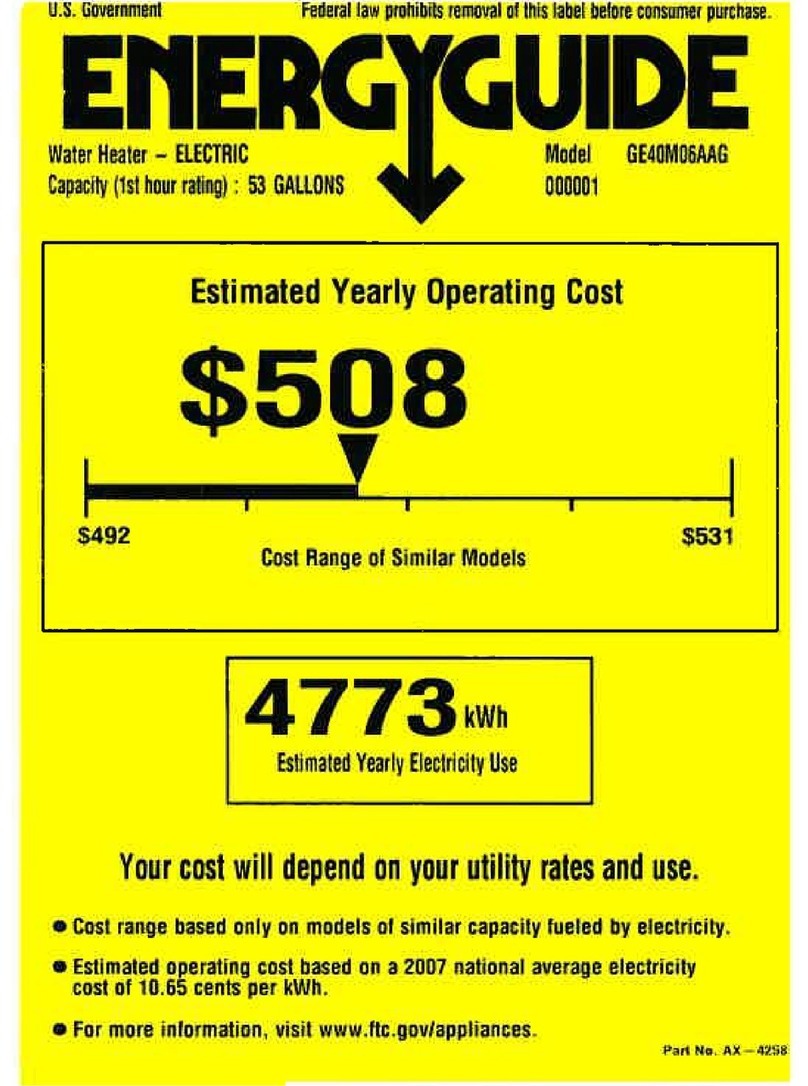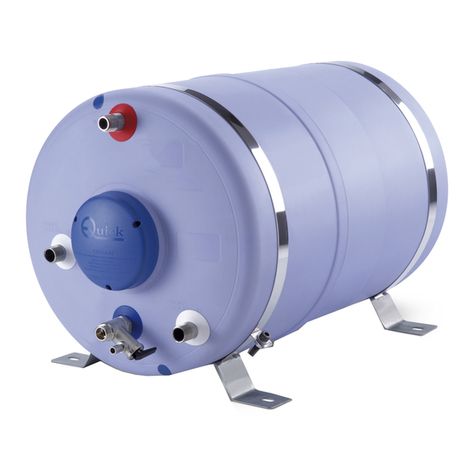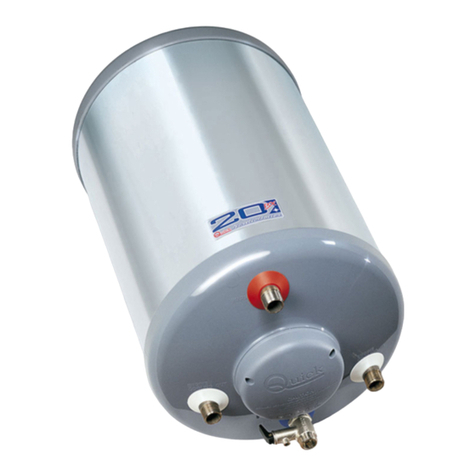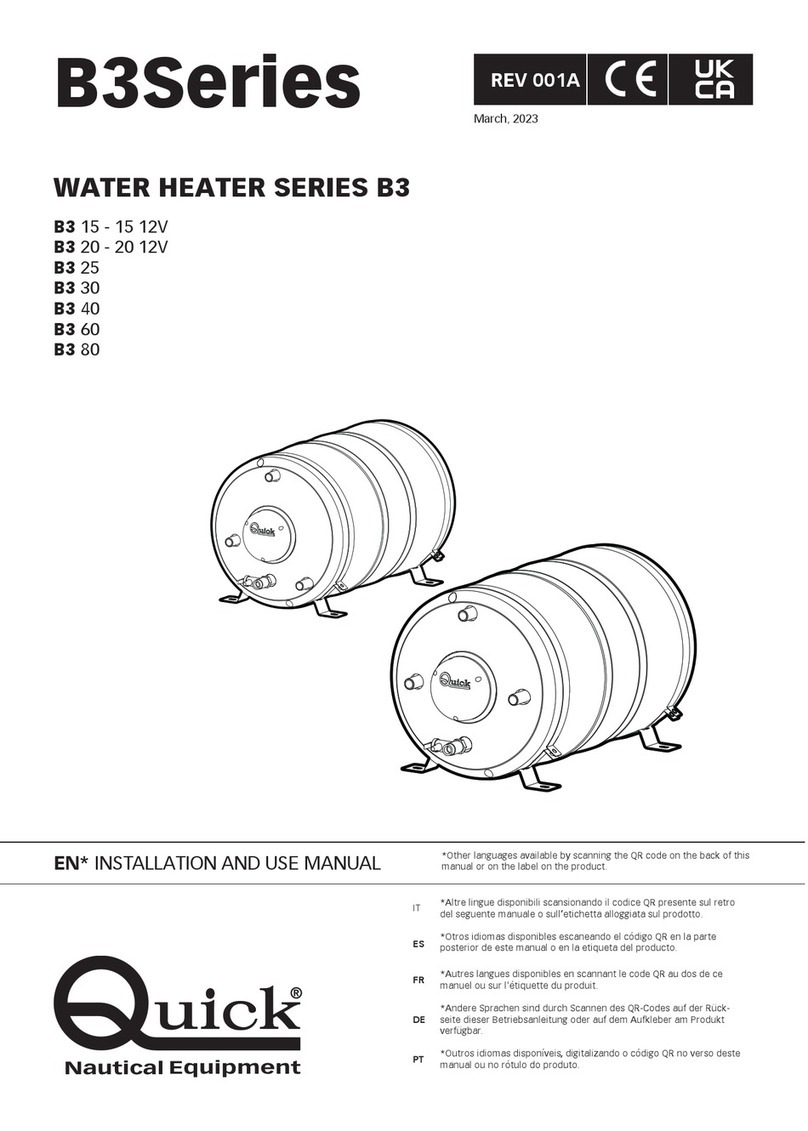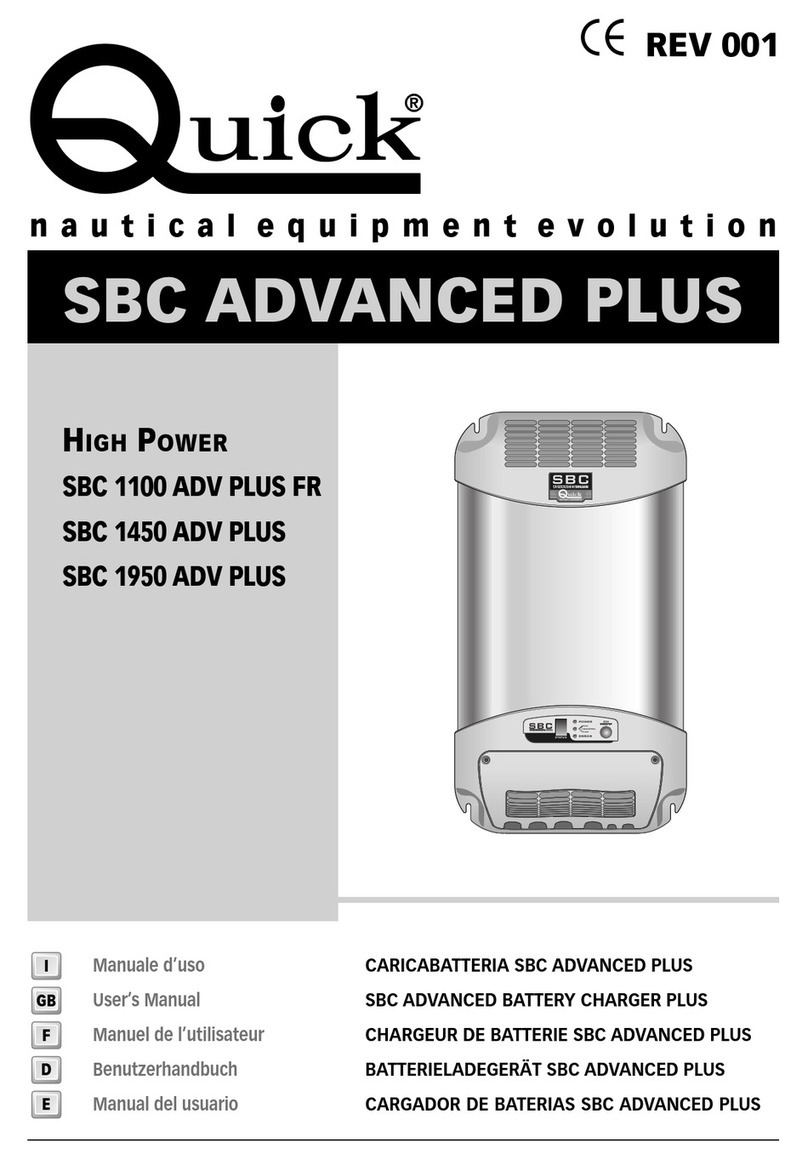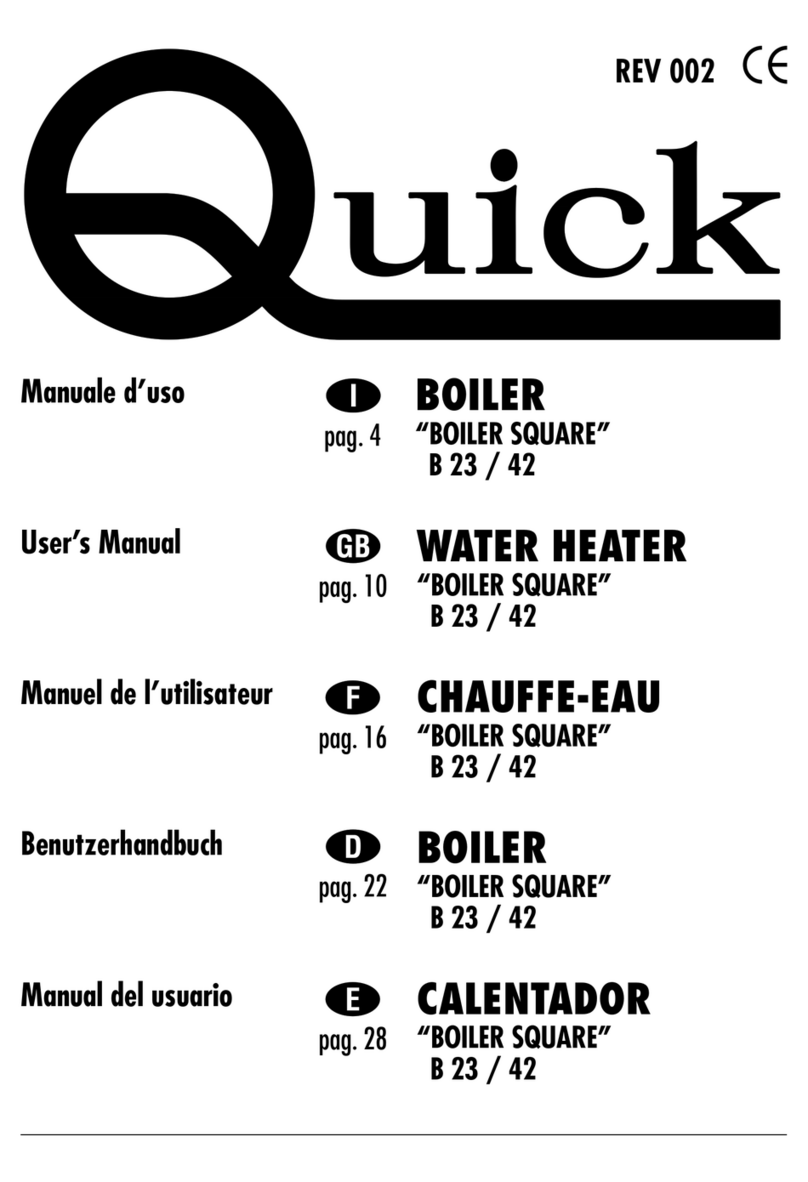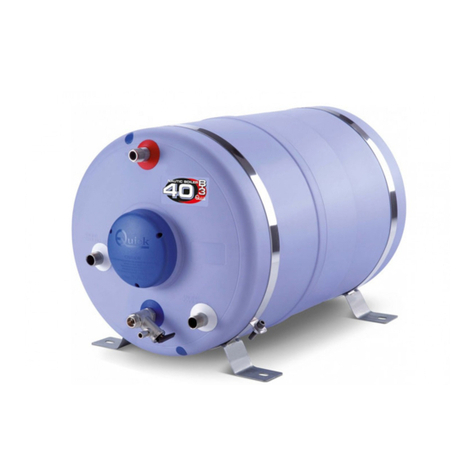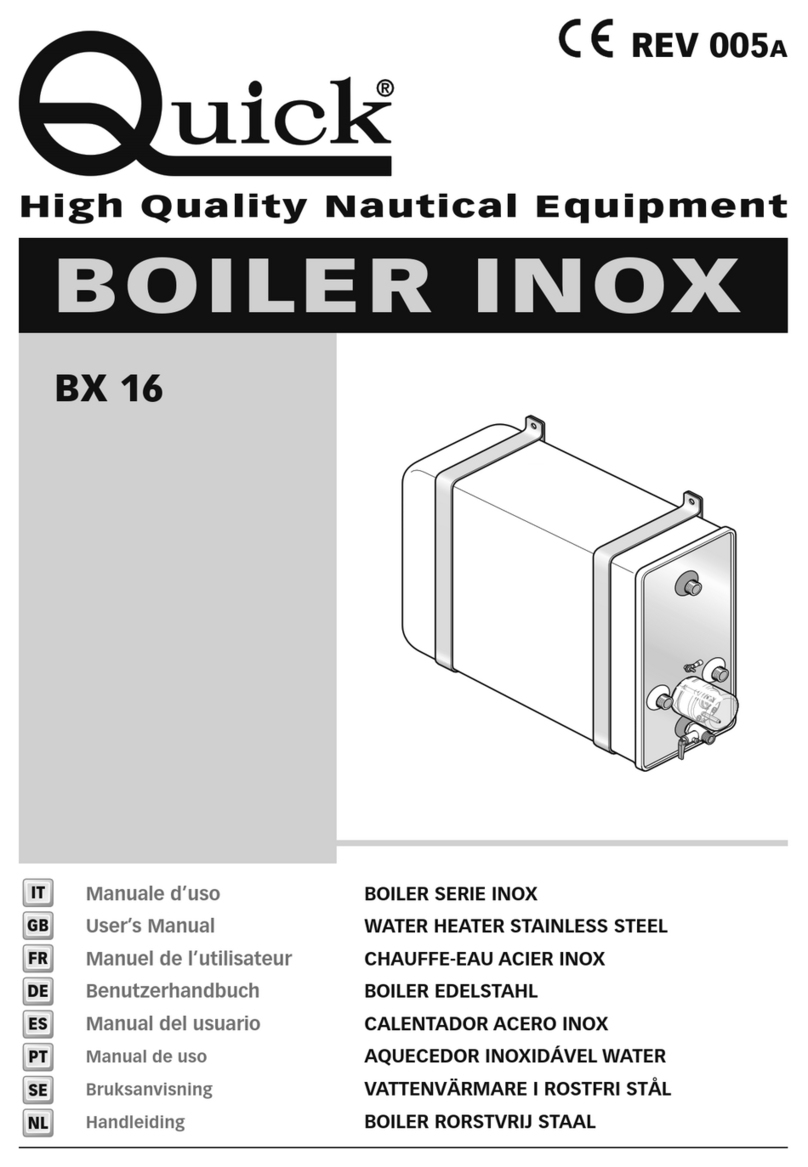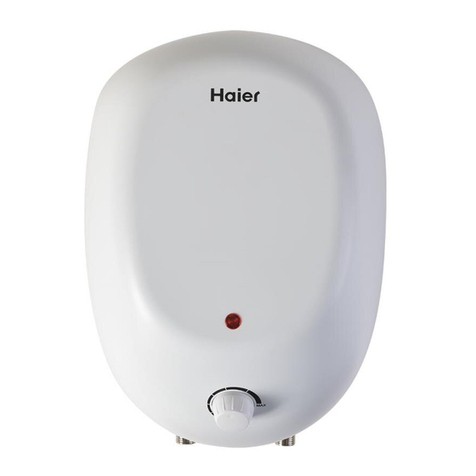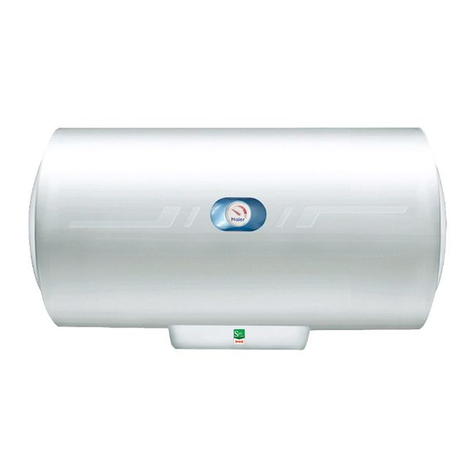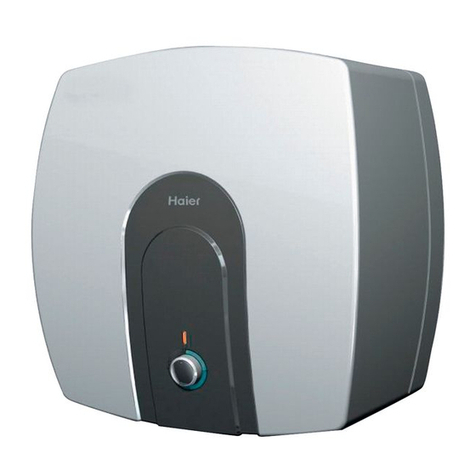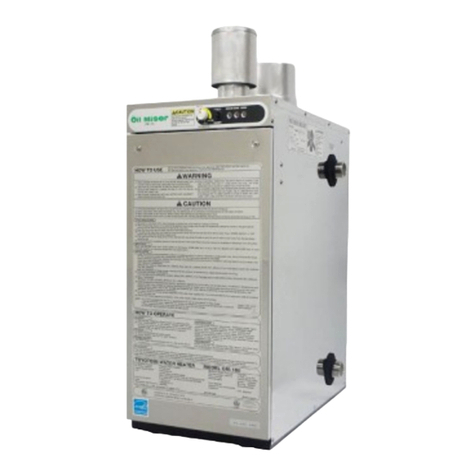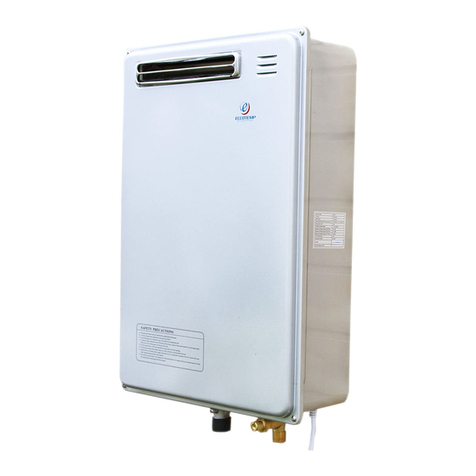
11
BOILER BX16 - REV005A
INSTALLATION
GB
NAUTIC WATER HEATER
Our long experience operating in the nautical field has given us the means to supply a new series of water
heaters with innovative characteristics compared with other heaters available on the market.
The advantages given by Quick®Nautic boilers are:
• high quality of materials ensure the product is both reliable and long lasting.
• Heat exchanger with a large exchanging surface.
• Producing hot water also by means of an electric element, which is provided with an adjustable
and safety thermostat.
• Relief/non return valve that allows discharging of the water heater in case of disuse.
• The installation is easy and practical on a flat area.
BEFORE USING THE WATER HEATER READ CAREFULLY THIS INSTRUCTION MANUAL.
IF IN DOUBT, PLEASE CONTACT THE NEAREST “QUICK®” DEALER.
WARNING: use this water heater in the applications described in this manual. Don’t use the equipment
for any other purposes. Quick®will not be held responsible for damage to equipment and/or personal
injuries cause by a misusage of the equipment.
PACKAGE CONTAINS: water heater - mounting - user’s manual - conditions of warranty.
INSTALLATION SITE
The water heater has to be placed in a dry and well-ventilated location. This precaution is required, even
though water heaters are made of sea environment resistant materials, since electrical systems are present
(in models provided). Moreover, if installed in non-ventilated environments, condensation could occur and
could be mistaken for a leak.
INSTALLATION
• Put mounting on the tank (1).
• Fix water heater on wall, as shown in fig. 1, using suitable mountings for the weight of the water heater and
for the type installation site in the boat.
WARNING: the weight of water heater/unit in the technical data refers to the empty unit. In order to
have the gross weight add to the empty weight, the water amount. (1 liter of water will almost weigh 1
Kg. / 2,2 lb).
• Carry out the hydraulic connections, relating to the input and output of tap water and from the engine cool-
ing to the heat exchanger, as shown in fig. 2. Keep the connections between engine cooling system and heat
exchanger as short as possible.
WARNING: the overpressure release pipe must be positioned sloping evenly downwards in a location
protected from the formation of ice.
WARNING: water might drip from the overpressure release pipe of the device, and this pipe must be
left open to the atmosphere.
WARNING: when fittings are used on water outlets, use Loctite 243, 577 or Teflon on the threads in
order to ensure tightness. Make sure that there is no water leakage.




